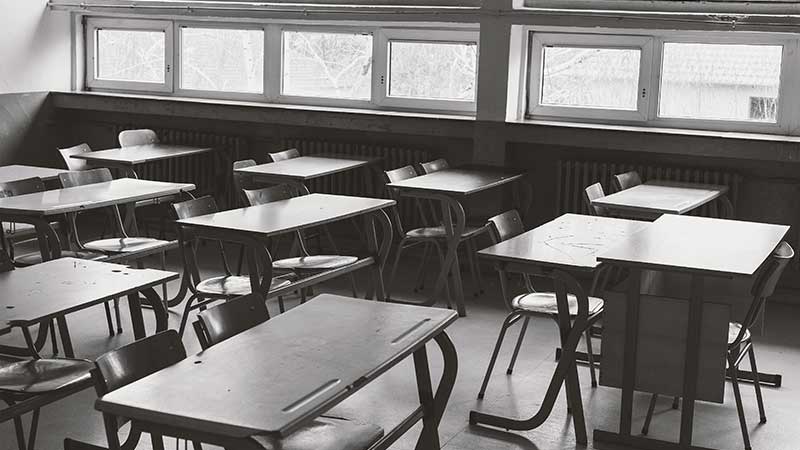Survival depends on delivering what matters most to students, employers and society
By Jamie Merisotis and Carrie Besnette Hauser
The sudden forced shift to online instruction, leaving classrooms and labs vacant, will reshape what it means to go to college. And the urgency of the pandemic shouldn’t distract us from seizing an opportunity for reinvention that centers on meeting the needs of today’s students.
“Long-term success cannot be a return to business as usual.”
America’s colleges and universities weren’t serving everyone equally well in the first place. That’s especially true for people who are Black, Hispanic and Native American and those from low-income families — who are growing in numbers.
To ensure real opportunity for everyone, we need fresh ideas.
For starters, we should no longer view college as a societal sorting mechanism or a finishing school for the elite.
If we’re not careful, this wave of financial distress, followed by a return to obsolete business practices, rigid academic calendars and inadequate student services, could undo the progress toward making college more accessible.
Already, abruptly separating students from on-campus advising, hot meals, health centers, computer labs and reliable internet access has driven many away. Some might not return without greater attention to affordability, support in their daily lives and the quality of instruction. Many whose educations are in jeopardy are people of color or are from poorer rural and urban communities.
We’ve seen that colleges and universities—small and large, public and private — can make rapid changes when they must. The spread of COVID-19 has forced instructors into using online learning platforms and video presentations long presumed inferior to what happens in classrooms and lecture halls.
Among instructors focused on measuring what students learn in their courses in innovative ways, the adjustment to online delivery at midsemester has gone relatively smoothly. Other faculty members also have risen to the challenge, along the way discovering approaches and tools which can enhance their teaching.
Some colleges and universities are more willing to accept credits in transfer. With students home from their colleges of choice, community colleges are pitching them hard to learn online less expensively. The postponement of high-stakes tests such as the ACT and SAT has led colleges and universities to relax admissions requirements and decision dates, in essence validating that students can demonstrate their readiness for college in more holistic ways.
All this gives us hope that we can emerge with new ways of ensuring adults, younger and older, can learn flexibly and affordably in ways that ready them for success in an increasingly difficult-to-navigate society and economy.
At the same time, the nature of human work is changing as companies rely more heavily on automation to eliminate repetitive tasks and on artificial intelligence to help solve problems. The pandemic will only hasten these developments.
While we’re spending billions to save higher education, college and university leaders should focus on engaging today’s students. They will have to focus more clearly on building people’s skills for work and civic life, including coming up with better approaches for them to demonstrate what they know and can do.
Finally, the country needs better ways of validating college-level knowledge acquired through the military, corporate training, work or serving others. This is long overdue. We need pathways that are cost-effective and lead people to new careers and more learning.
As colleges and universities weigh whether to reopen campuses this fall, it’s clear some won’t recover from the pandemic. Staggering budget deficits and program cuts will await those fortunate enough to survive.
Long-term survival will hinge on their ability to deliver what matters most to students, employers and society.
Even before this disaster, college and university enrollments were shrinking as the number of high school graduates steadily declined. The call for social distancing exposed the fragility of long-standing assumptions about college.
Many colleges that survived the Great Recession emerged in financial death spirals, with annual operating costs outpacing revenues. These institutions survived by raising tuition and borrowing more. With states facing revenue shortfalls and changes in student behavior resulting from the coronavirus, the higher education system we knew is unsustainable.
Even so, there are reasons for optimism. In the United States, about 36 million people have tried college but never finished their degrees. We should address the reasons why. A return to economic vitality will mean successfully reaching many of them to fill the jobs requiring skills that are in demand by companies, big and small, that make it through the recession.
To meet the needs of these students will mean revising or setting aside outdated intellectual traditions and investing in technology-enabled business models, investing in faculty training on new pedagogy such as competency-based learning and augmenting face-to-face interactions.
Only in these ways can higher education meet the needs of people who are older, more racially and ethnically diverse, and who are working to care for their children or parents. Their talent — in the form of relevant knowledge, skills and abilities — will be essential to the nation’s recovery.
Today’s students have waited long enough for something better.
Carrie Besnette Hauser is a board member of the American Council on Education and serves as president of Colorado Mountain College. This article originally ran in Inside Higher Ed, May 18, 2020.
